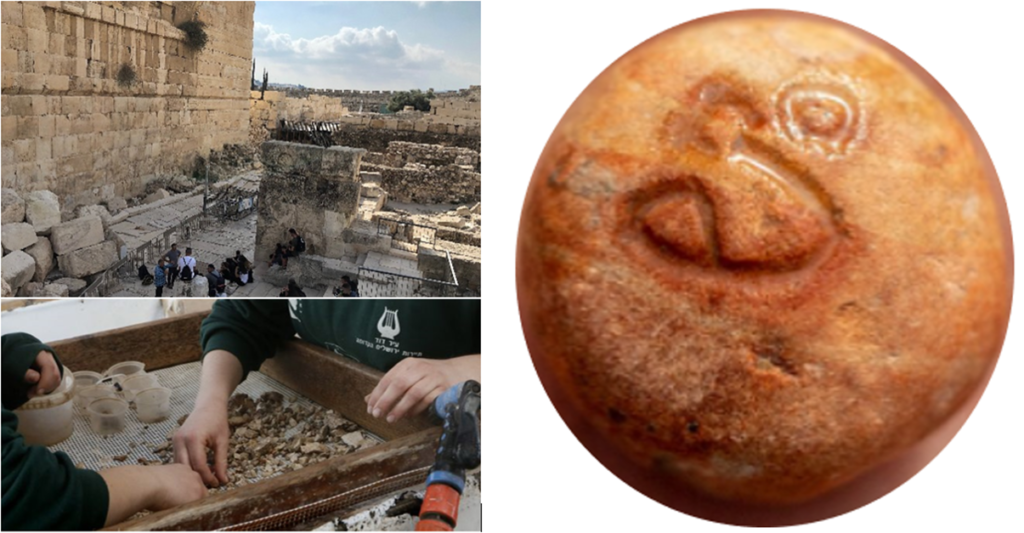
Parashat Vayakhel (ויקהל – And he assembled himself) Exodus 35:1 – 38:20
In the Parasha Vayakhel, Moshe recalls the command to observe the Shabbat, then asks the people to bring the materials to make the tabernacle and the sacred utensils.
Parshat Shekalim (שקלים – Shekels) Exodus 30:11 – 30:16
The Shabbat which precedes the month of Adar (Adar II in embolismic years, like this year 5782 / 2022) is called Shekalim where it is remembered that every male adult, over the age of 20, had to give half a shekel for the needs of public sacrifices. A tiny stone weight from the First Temple period has been discovered during excavations near the Western Wall. This extremely rare and tiny weight bears the inscription bekah (half shekel) in ancient Hebrew script. It weighs 5.67 grams. During the day, the silver beka is equivalent to €3.80, ₪14.10, $4.30 or £3.20.
It is customary to make a donation to works, during the month of Adar, in remembrance of the half-shekel (זכר למחצית השקל – zekher le-machatzit ha-shekel). The most appropriate time to make this gift is the one before the Mincha service, before the Purim fast, in order to associate the Tzedaqah with the fast, contributing to the atonement (Mishna Berura 694, 4, Kaf Ha chaim 25). Some believe it is right for every member of the family, even the fetus in its mother’s womb, to give tzedakah in remembrance of the half-shekel (Kaf Hachaim 694, 27).


